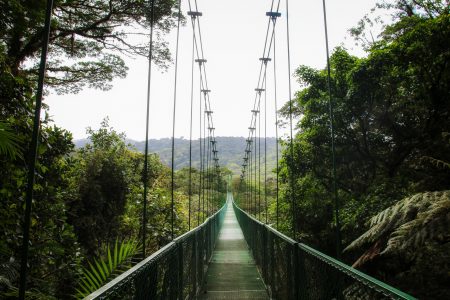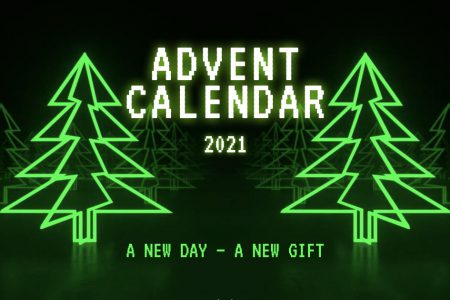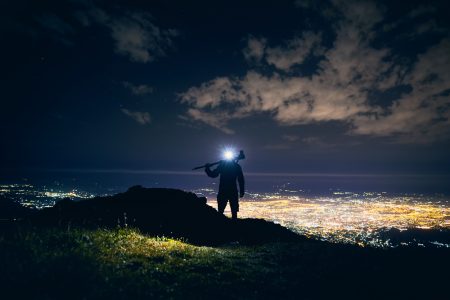“Somewhere, something incredible is waiting to be known.” – Carl Sagan
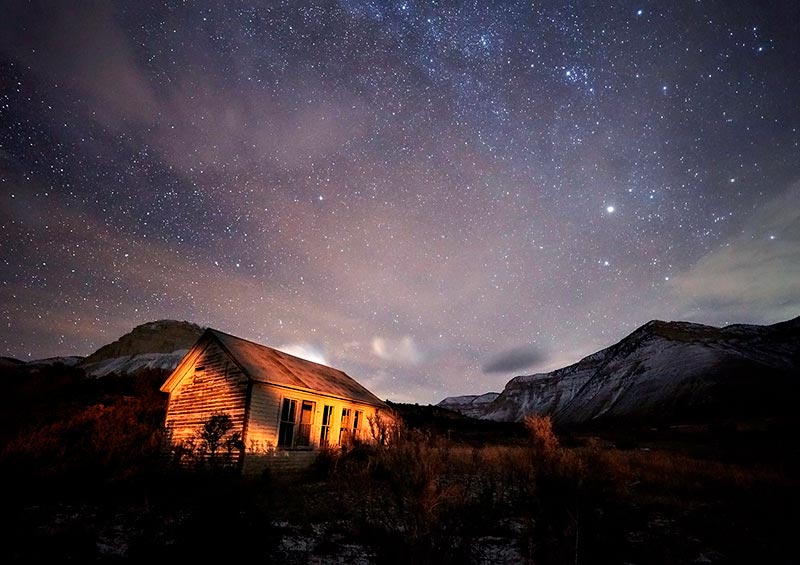
While the TV in the living room is playing the usual sitcoms, I am in my bedroom checking the batteries to my cameras making sure they are fully charged and the memory cards have been properly formatted. The lenses are clean and the camera settings are set to the correct white balance, ISO, shutter speed and aperture. I pack my cameras into the bag and head for the front door, tripods already in my car.
As I pass the living room, I look back and see a figure sitting in the chair watching another sitcom. It is only the early afternoon and my goal is to shoot the night sky; I still want to get to my destination well before sunset to set up my gear and get my desired composition.
If conditions are right, I will definitely include the sunset into my shooting, but in this case it’s all about the night. Luckily I live in a smaller city in a very rural area of western Colorado with plenty of spectacular scenery so my drive to my destination is very short, giving me plenty of time to set up and explore my surroundings.
- Tip: It is always best to arrive early and during the daylight hours to get a better feel of the surroundings and to get the best composition.

After several hours, it is finally getting dark. I can finally start seeing some of the fainter stars. Back home, the house is quiet and everyone is in bed, yet I am at my best moment. With my camera settings the way I want them and the composition in place, I will take a quick test shot making sure everything is perfect.
- Tip: Shooting faint objects in the night sky requires high light sensitivity on a camera. This means setting a high ISO (a minimum of 1600 and preferably higher). 3200 is ideal for a crop sensor camera and 6400 or higher if possible with a full-framed camera. The better the noise performance of the camera, the better off you are. The better the noise performance of the camera, the better off you are.
- Tip: A very fast lens is also necessary, ideally a lens with an aperture of F2.8. This is the minimum (the wider the better). Also, keep in mind that wider apertures can cause some lens distortions. The “perfect” aperture would be F2 or F1.8.

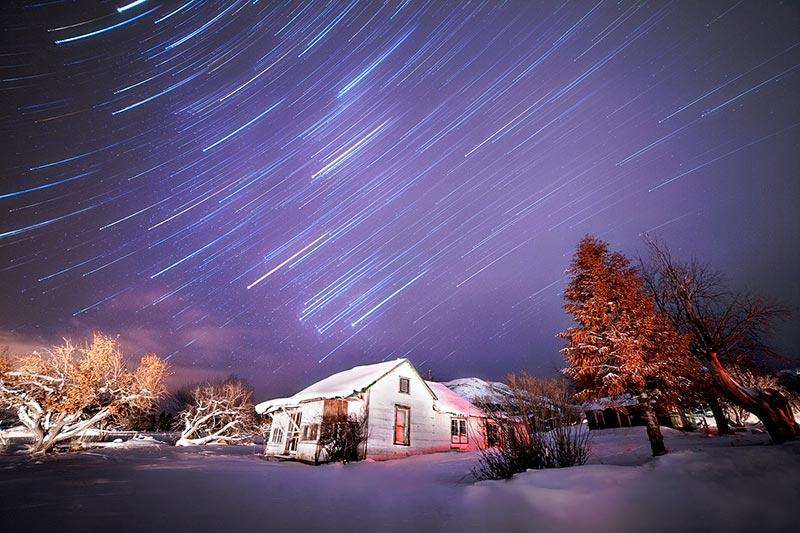
I have struggled with PTSD for over 10 years now, and being outdoors is my best therapy. The wonders of our universe that are only visible at night give me that extra sense of calm. I feel fortunate to have taken up this lifestyle instead of drugs and alcohol like so many people. I have come through my short life, waking up in the morning with a sense of accomplishment instead of a vicious hangover.
“When we’re born, we want to know why the stars shine. We want to know why the sun rises.” – Michio Kaku
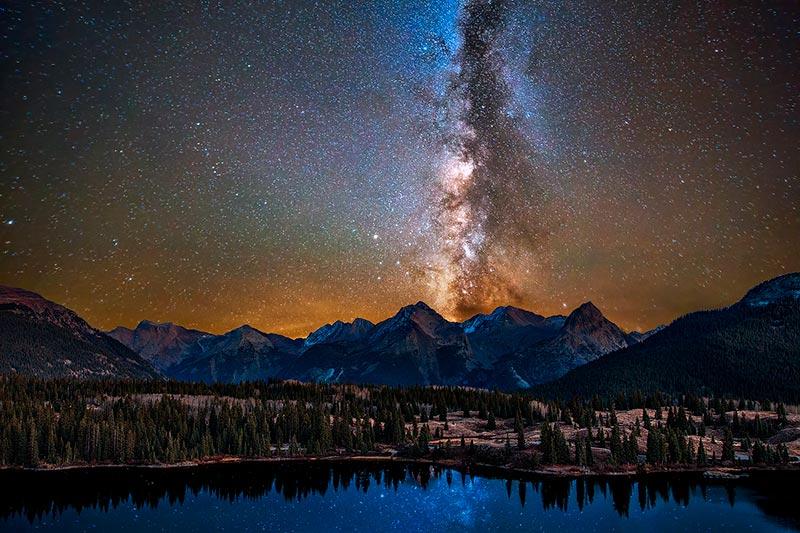
As I am taking photos of the night sky, I still find the necessary time to just sit down and look up at the sky. I am trying to pinpoint what part of our galaxy I am looking at; where the famous nebulas are as photographed by the Hubble Space Telescope. To my uncontrollable excitement, I wonder about the recently discovered Earth-like planets and where they are located.
Because the motion in the stars is not readily noticeable, there is ample opportunity to spend lots of time looking at the sky in between photos. Unlike sunrise or sunset, there is no rapid changing light that makes shooting the night sky a more laid back and a slower paced endeavor; slow enough to sit in a chair and sip some hot cocoa or coffee (if you desire a beer go right ahead.)
- Tip: Even though you will not notice them directly, the stars do move as the Earth rotates. Despite the need for longer exposures to capture the faint light, there is still a limit as to how long you can expose your shots before the points of light become streaks; something vital for shooting the Milky Way.
- Tip: In order to get the proper exposure and keep the stars as solid points, it is necessary to use a little math. Don’t worry, it’s easy. Take the number 500 and divide it by the focal length of the lens to get the maximum shutter exposure length. My 14mm lens on my 5D full frame would be a max of 35 seconds.
- Tip: If you are shooting a crop sensor camera, you will have to take the focal length of the lens and multiply that by the crop factor of your camera. Canons are generally a 1.6 crop while Nikons are a 1.5 crop. My 14mm lens on a Canon Rebel would be equivalent to a 22mm lens, making a maximum 23 second exposure. Crop sensor cameras give less options for shooting the Milky Way, but it still can be done.
As I look up into the night sky and view the photos taken on my camera, I actually have a feeling of pity for those people who are not out here with me or doing the same thing as me, they really don’t realize how much they are missing.
“Look up at the stars and not down at your feet. Try to make sense of what you see, and wonder about what makes the universe exist. Be curious.” – Stephen Hawking
The above quote from Stephen Hawking expresses exactly how I feel and why I do what I do every night. The Earth is a truly special place in my heart, but the universe is so vast and shockingly complexed. It’s full of wonders we can only dream of. The Earth is, as we are starting to finding out, not the only habitable or potentially hospitable world in our universe.
I truly encourage everyone who reads this to not put the camera away after the sun has set and keep shooting well after dark. I have a 3 ½ hour online course that will go into significantly greater detail on the preparation and shooting of the night sky specifically targeting the Milky Way with more courses coming in the future. The link can be found on my website.
In the near future I will also be hosting photo tours for anyone interested in hands-on learning and experience in shooting the night sky. As of right now, I am looking for anyone interested in these photo tours. If anyone has a desire to travel to the western US (especially western Colorado or Utah) and has the desire to experience the dramatic night sky against an incredible landscape, please let me know.
Related Articles
Read top articles of the month!
Don’t want to miss any tips or industry news? Subscribe to the Depositphotos blog digest.



